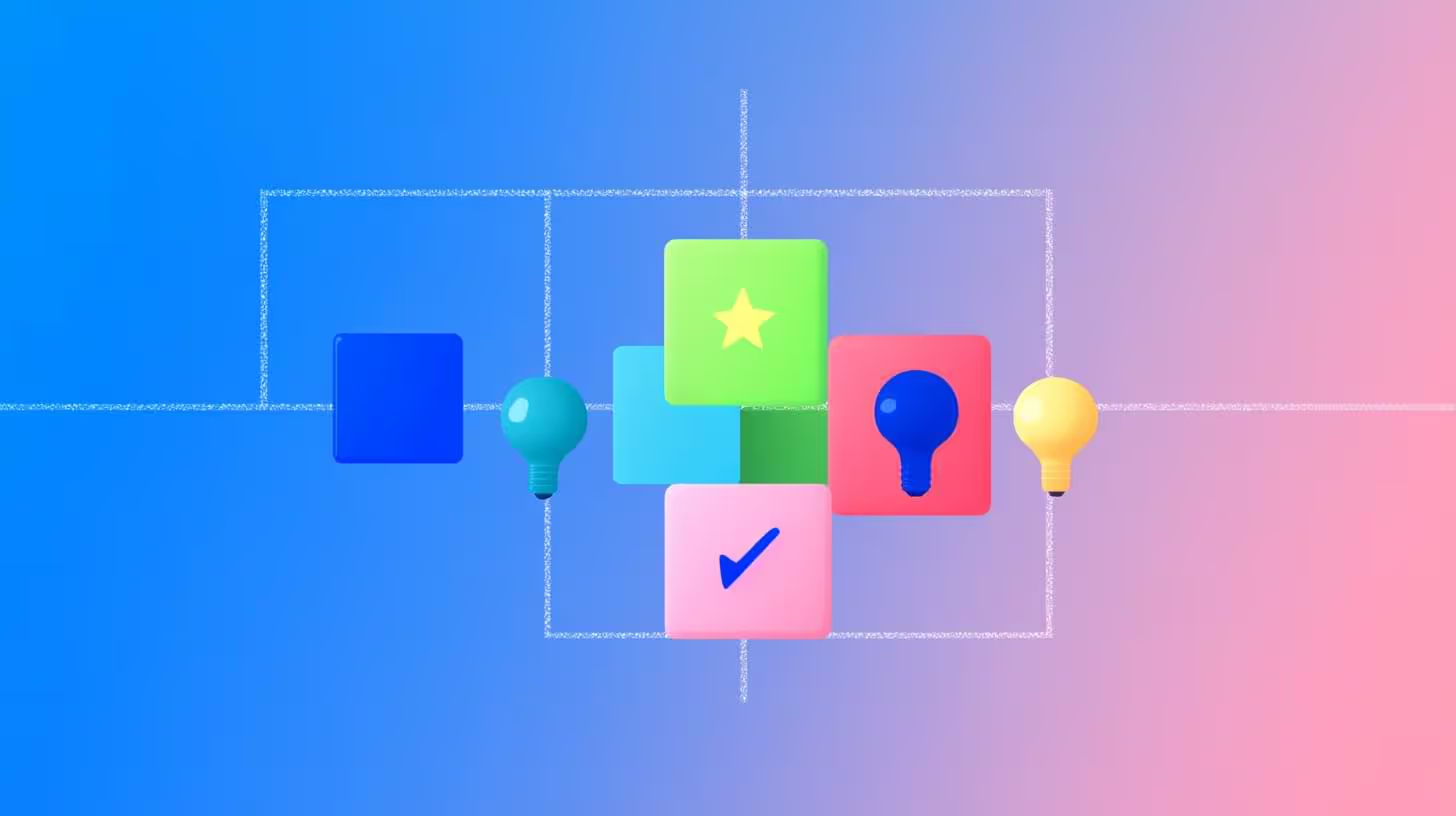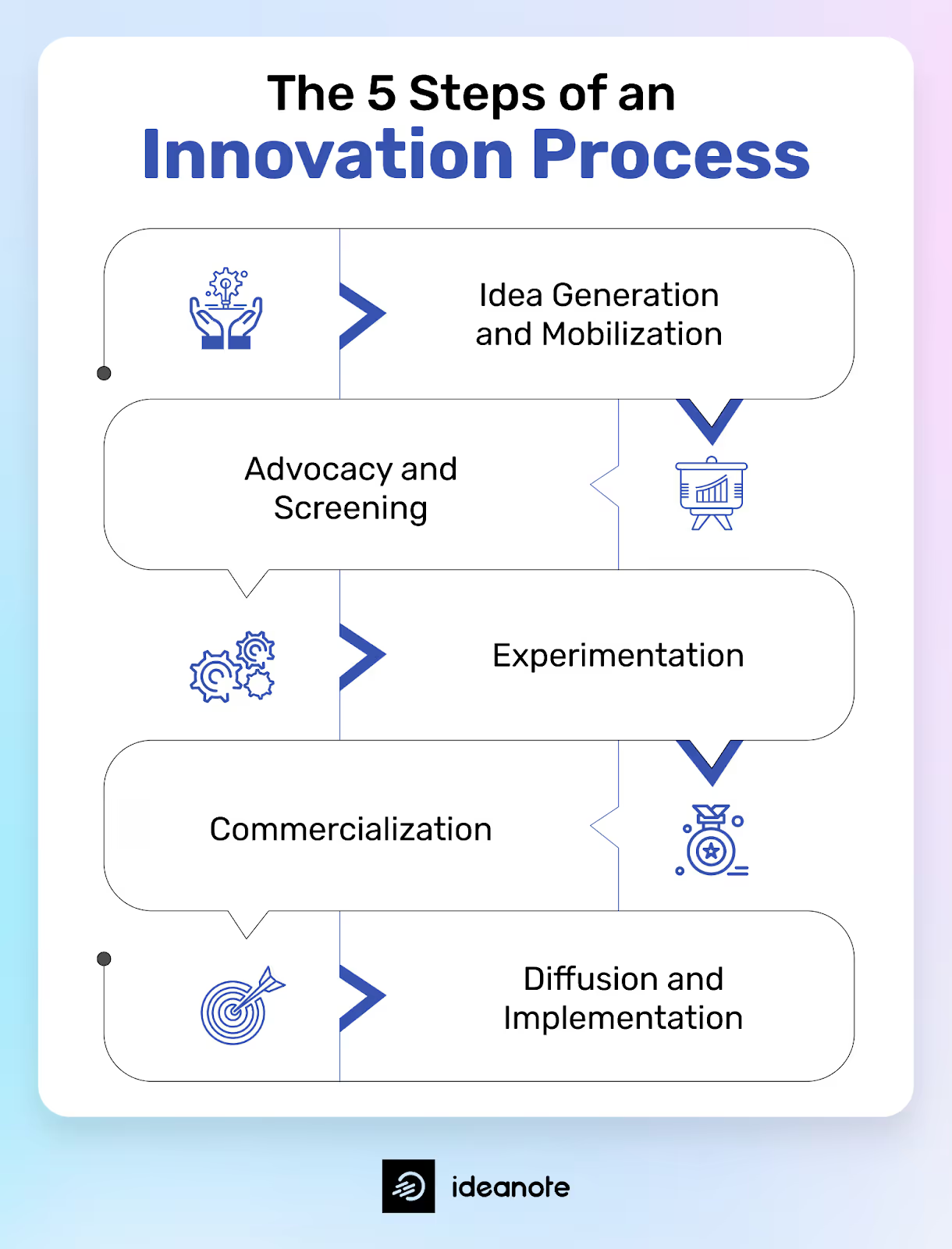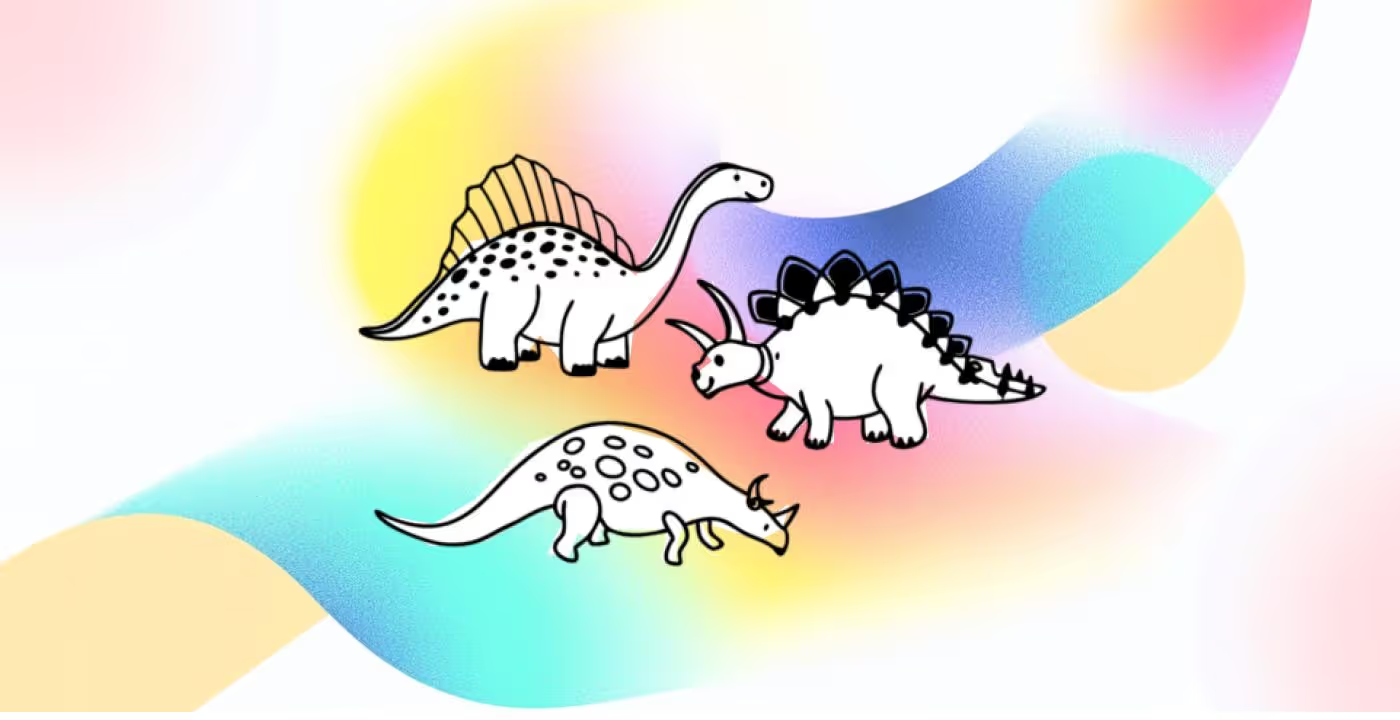
How to Choose an Innovation Process that Fits YOU?
Innovation isn’t about lightning strikes or eureka moments—it’s messy, deliberate, and often frustratingly human. We’re seduced by the idea of genius breakthroughs but rarely think about the scaffolding that holds them in place. The truth is, the right process can make or break innovation. But how do you find one that feels less like a straitjacket and more like a compass? This article unpacks the anatomy of innovation and reveals how to create a process that truly works for you.
Innovation is a buzzword thrown around a lot, especially in a world of digital progress and out-of-the-box solutions. However, its true meaning isn't always crystal clear.
Companies often jump into innovation because it’s trendy to do so, yet they end up disappointed with the lack of tangible outcomes. This disappointment usually comes from overlooking a key element of innovation: the process behind it.
The truth is, you cannot innovate unless you have a clear process on how to implement innovation into your organization. It's like trying to build a house without a blueprint. You might have all the latest tools and materials, but without a plan, you'll likely end up with a structure that's shaky at best.
Similarly, without a structured approach to innovation, companies may find themselves floundering in a sea of ideas without any real direction or impact. In this article, we'll discuss what the innovation process is and how to choose one that fits your company.
What is an Innovation Process?
Innovation can seem daunting and complex to many. Companies want it, but they’re afraid of it because they see it as something difficult to achieve. And indeed, it often is, more so without a concrete process on how to implement it.

That's what an innovation process really is: a series of well-defined steps that guide organizations through the innovation journey, from the brainstorming of groundbreaking ideas to their implementation.
More specifically, an innovation process is a structured approach to innovation that focuses on using creative and out-of-the-box methods to transform ideas into tangible outcomes and achieve specific organizational goals within a set timeframe.
Inevitably, as good as your innovation process may be, failure and the trial-and-error approach are inherent parts of innovation. True innovation requires time and inevitably involves some setbacks along the way.
But having an innovation process can help companies navigate challenges, learn from failures, and ultimately achieve their innovation goals.
The 5 Steps of an Innovation Process
In many organizations, innovation happens by serendipity rather than a concrete process.
But serendipity isn’t a good innovation strategy. Rather, it makes innovation a random occurrence that cannot be controlled.
A study of over 30 US and European companies with robust innovation processes breaks down the innovation process into 5 stages: idea generation and mobilization, screening and advocacy, experimentation, commercialization, and diffusion and implementation.
While not every innovation process will follow this exact model, these are the 5 generalized stages every company should take into account when engaging in innovation.

1. Idea Generation and Mobilization
Idea generation is a starting point of any creative process. Once an idea is born, it enters the mobilization stage, where it transitions to a new space, whether physical or virtual.
Often, ideas need support from someone other than their creator to keep progressing since not all inventors possess marketing skills.
In this stage, the idea begins to gain momentum and direction, paving the way for further development and eventual implementation.
2. Advocacy and Screening
Once the idea is generated and collected, it now needs to be scrutinized and evaluated to verify its potential for implementation.
In this second stage of the innovation process, ideas go through rigorous evaluation to determine their potential benefits and challenges, as well as find out whether they align with the organization's objectives, vision, and strategy.
The key to selecting the right ideas and rejecting the ones without potential is to give each of them enough time to be properly screened and not to reject ideas based solely on their novelty and unconventionality.
After all, true innovation is all about coming up with out-of-the-box ideas that may seem crazy or impossible at first glance.
3. Experimentation
After the ideas with true potential are selected, it’s time to move them to the experimentation stage.
Here, theoretical ideas are turned into tangible prototypes or viable products ready for market testing.
The experimentation stage aims to determine whether there’s demand for this particular solution and how the target market reacts to it.
During this stage, companies often gather insights that may inspire adjustments to the current idea or even spark entirely new concepts.
However, the experimentation stage isn’t just about assessing whether the idea will be well received by the target market. It's also about testing whether the ideas are sustainable for the organization at that specific time.
For example, you might find that the timing isn't right for a particular idea or that implementing it is beyond the company's current capacity.
4. Commercialization
Unless commercialized, an innovative idea is just that: an idea. The commercialization stage of the innovation process aims to create market value for the idea and package it into an attractive product or service that will appeal to the target market.
In the commercialization stage, the company should do two things: clarify the idea’s potential, benefits, and costs and create a business plan to bring the idea to market successfully.
This involves thoroughly analyzing the market landscape, identifying potential competitors, defining the unique selling points of the product or service, and developing a strategy for pricing.
Overall, the goal is to transform the innovative idea into a tangible offering that meets the needs and desires of the target market while also generating revenue and profit for the company.
5. Diffusion and Implementation
The commercialization of the innovative idea leads to the fifth and final innovation stage: diffusion and implementation.
In this stage, the mindset shifts from developing an innovative product or service and assessing whether it can be successfully commercialized to spreading its adoption on a broader scale.
This means ensuring widespread awareness, acceptance, and adoption of the innovation across various markets and demographics.
Implementation, on the other hand, is all about finding ways to integrate the innovation into real-world applications and our everyday lives.
This involves assessing its impact on the lives of its target market and its practicality in solving specific problems or meeting specific needs.
Using an idea management system can help you easily go through these 5 steps of innovation.
An idea management platform helps collect ideas and take each idea through its lifecycle - from evaluation and prioritization to experimentation, validation, and implementation.
There Are Different Types of Innovation Processes
Innovation processes can vary, ranging from a simple "zero process," like a traditional suggestion box where ideas often get lost, to an overly complex system with numerous validation steps that can stretch forever without any idea being implemented.
We’ve identified five types or levels of innovation processes:
- Zero Process: Usually a simple suggestion box, which is almost always inefficient because, more often than not, it leaves ideas in the collection stage indefinitely.
- Almost Zero Process: A few badly chosen tools and a chaotic process that lead to confusion and disorganization and don’t serve innovation at all.
- 3-Stages Innovation Process: A simple, 3-phase process that involves idea collection, evaluation, and implementation. For some companies, it may be enough to drive innovation forward.
- 5-Stages Innovation Process: A solid yet not overly complicated innovation process that encompasses all 5 stages, usually with the help of a reliable idea management system like Ideanote.
- Advanced Innovation Process: An elaborated innovation process for bigger companies and more complex industries. This process involves a few extra steps, such as building a business case, pitching to C-level executives, allocating budget, etc. Although it can be much more thorough and aligned with the company’s internal procedures, such a complex and lengthy process can slow down innovation.

How to Choose an Innovation Process that Fits Your Company
Choosing the right innovation process for your company depends mainly on the complexity of your industry, business, and internal procedures.
Overall, the key to finding an innovation process that brings results and doesn't last forever is to strike a balance between:
- Rapidity of implementation: To see tangible results of your innovation efforts, you want to move from idea generation to implementation as fast as possible.
- Complexity of the process: In some companies, ideas need to move through multiple layers of validation and conformity. Yet, the more complex the process, the slower the innovation.
- Innovation costs: Keeping your budget in check can help you avoid stretching the process to the point where it ends up draining the company's resources before any idea is actually implemented.
Finding this balance can look different for different companies. What works for your competitors won’t necessarily work for you, and vice versa.
Ideally, you want your innovation process to be simple enough to implement ideas quickly yet complex enough to make informed decisions about which ideas to pursue and how to allocate resources effectively.
If your current innovation process makes idea implementation too slow, you may need to simplify it.
If you're starting from scratch or have had a chaotic process, you may need to structure it with 3 to 5 additional steps for better organization.
So, before you settle for an innovation process, evaluate your main problem:
👉Do you already have an innovation process? If not, start creating a solid foundation by implementing an idea management system or at least a basic 3-phase process.
👉Is your current innovation process chaotic? If yes, structure it by adding more steps to achieve a solid framework.
👉Do your ideas take too long to get implemented? If they don’t, you're probably on the right track. If they do, simplify your process to speed up implementation.
Next up to Read:
Streamline Your Innovation Journey with Ideanote




